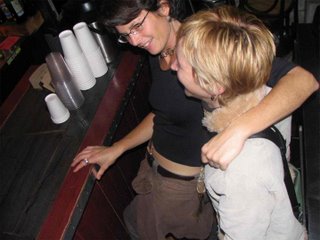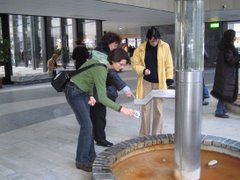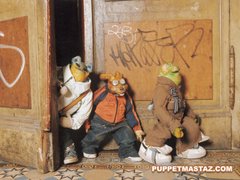Friedrichshain: Fresh and Photo-Ready


 After reunification, low rents and the many empty apartments attracted the attention of West Berlin squatters to Friedrichshain.
After reunification, low rents and the many empty apartments attracted the attention of West Berlin squatters to Friedrichshain.
Today, more and more people with alot of money are migrating to this part of the city, buying up real estate for business and artistic endeavors. Friedrichshain has a centuries-old working class, residential
roughness
that excites my senses, and makes it hard for me to accept the economic potential of its inevitable urban develop-
ment and class disparity. The description of Friedrich-
shain in Lonely Planet had me thinking it was the center of the punk element of Berlin. But it did not feel street punk to me. Although the grafitti on this Squat gives it that anarchic feel. It's already full of classy boutiques, clubs, restaurants, bars, galleries, and design and media companies, yet they are all are presented in a very quaint way, suggesting moderation yet promising a future of gentrification. It's fashionable but understated, attractive yet repulsive. I would have lived there, but already it's too late.
I had the most tasty fresh "bio" pasta though. There was a photo shoot at this Martella cafe. The photographer let me take a shot of his 'in situ", photo-ready plate of fresh pasta.
And finally, why I follow suit of dividing the city into districts as all the guidebooks do is beginning to feel uncomfortable. So perhaps I should look for another way to describe the areas of Berlin beside the official district designations.I think it will be more accurate to identify neighborhoods rather than districts, but I must return to Berlin before I can do that.







